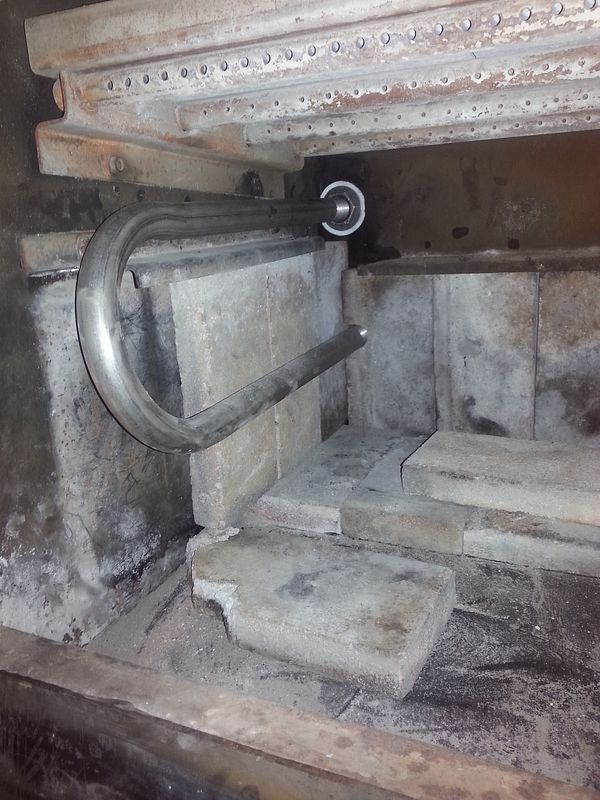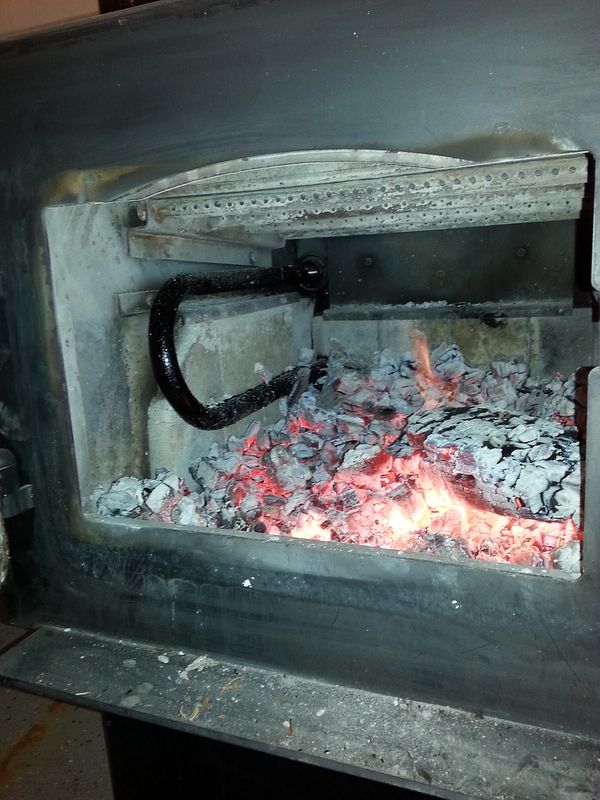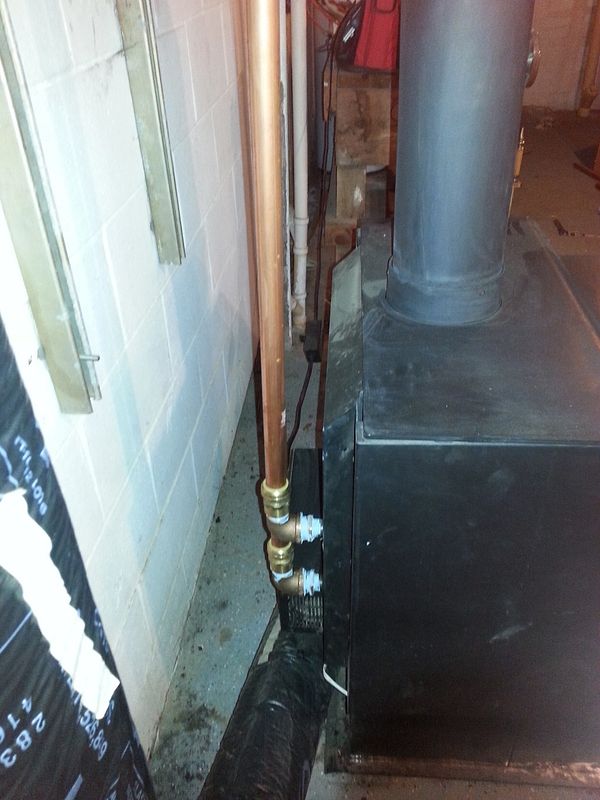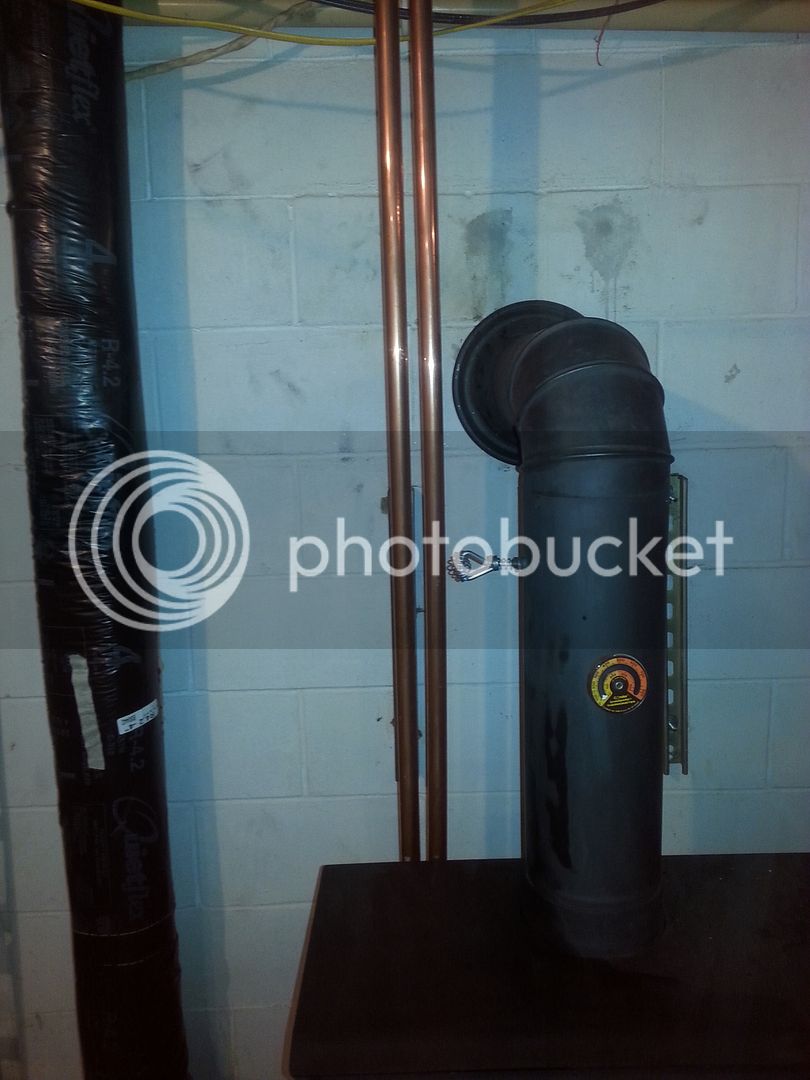I picked up a stainless steel U-Coil online, I plan on installing it inside my woodstove. It will preheat my boiler for floor heat in my 50'x32' garage. Stove is in basement right before my boiler, so I can tap right in to the inlet of boiler with no problem. I will run circulation pump constantly and still have boiler hooked up so it will kick in when I am gone.

I am just looking for input on if I should install in my firebox, under secondary coils. Stove is a Heatilator WS-22, manual is here: Look at illustration 12.1 on page 12 for pic.
http://downloads.hearthnhome.com/installManuals/7057_128.PDF
Or above the secondarys/ceramic blanket, directly under the top of the stove. I am wonder if it will effect the airflow up the chimney. Loop is 1" stainless tubing about 7" wide. Or am I overthinking this, just hate drilling holes in cast iron. I can't weld cast. Want it done right and don't want to re-plumb it as the system is pressurized.
Directions from coil site says to place where it is hottest.

I am just looking for input on if I should install in my firebox, under secondary coils. Stove is a Heatilator WS-22, manual is here: Look at illustration 12.1 on page 12 for pic.
http://downloads.hearthnhome.com/installManuals/7057_128.PDF
Or above the secondarys/ceramic blanket, directly under the top of the stove. I am wonder if it will effect the airflow up the chimney. Loop is 1" stainless tubing about 7" wide. Or am I overthinking this, just hate drilling holes in cast iron. I can't weld cast. Want it done right and don't want to re-plumb it as the system is pressurized.
Directions from coil site says to place where it is hottest.








